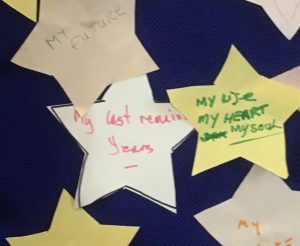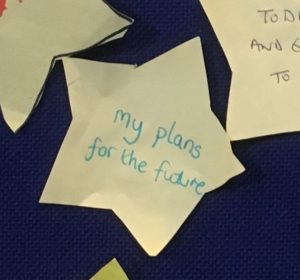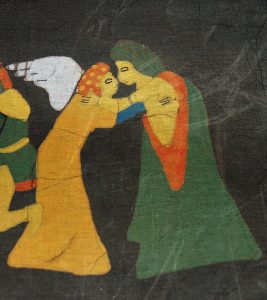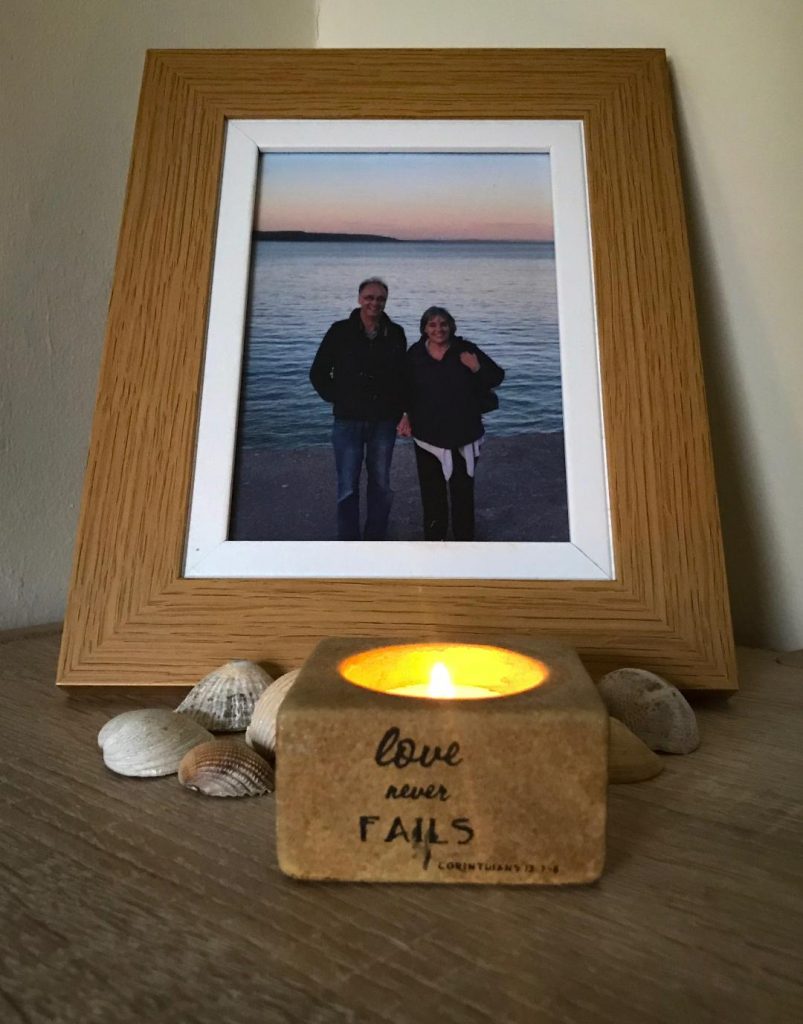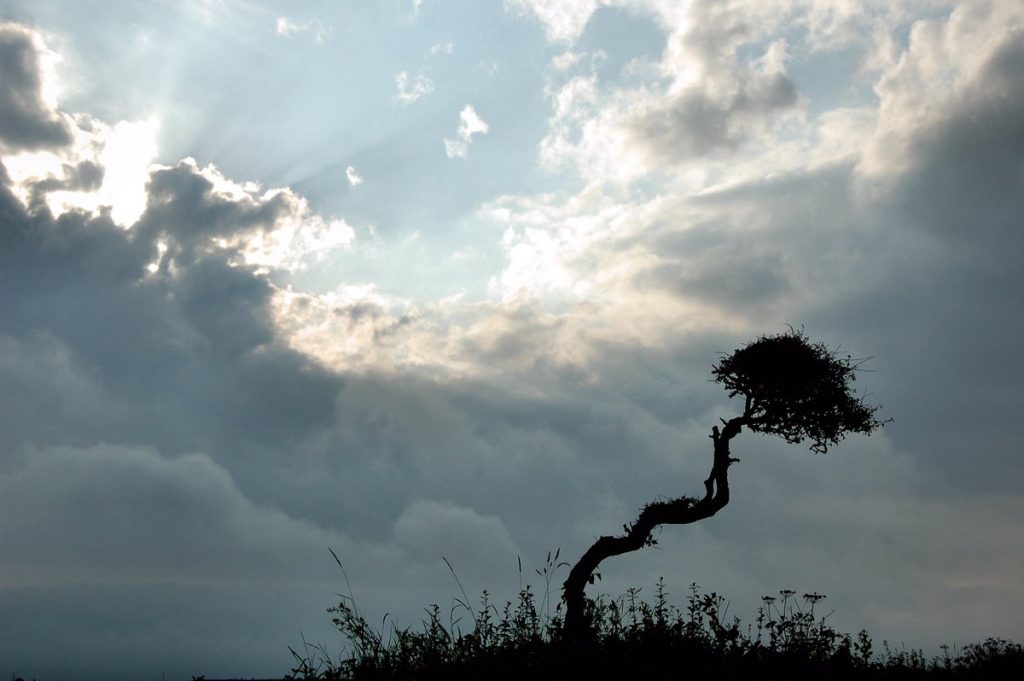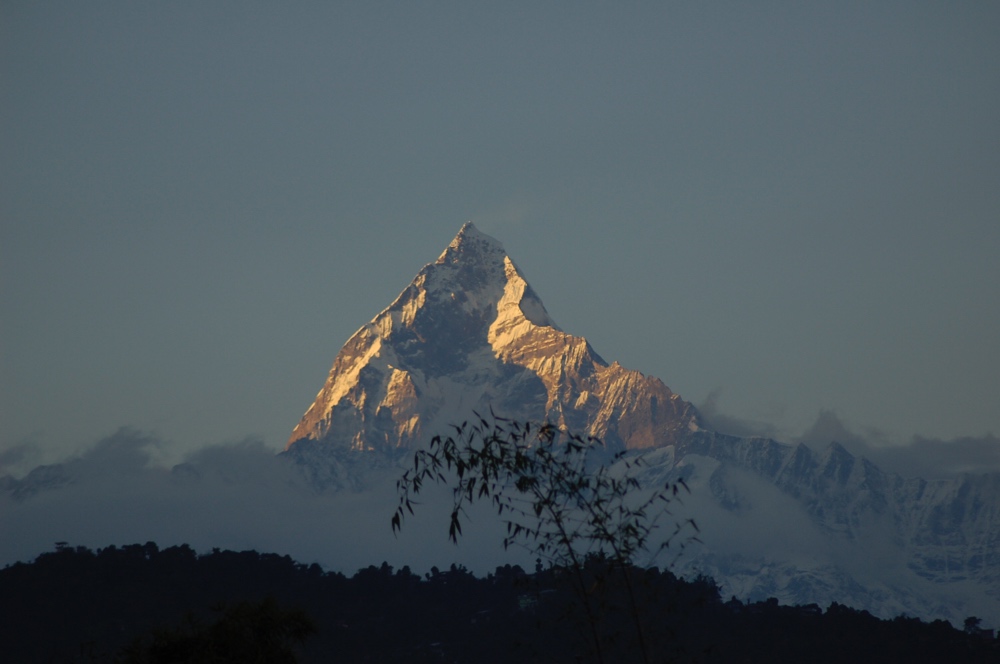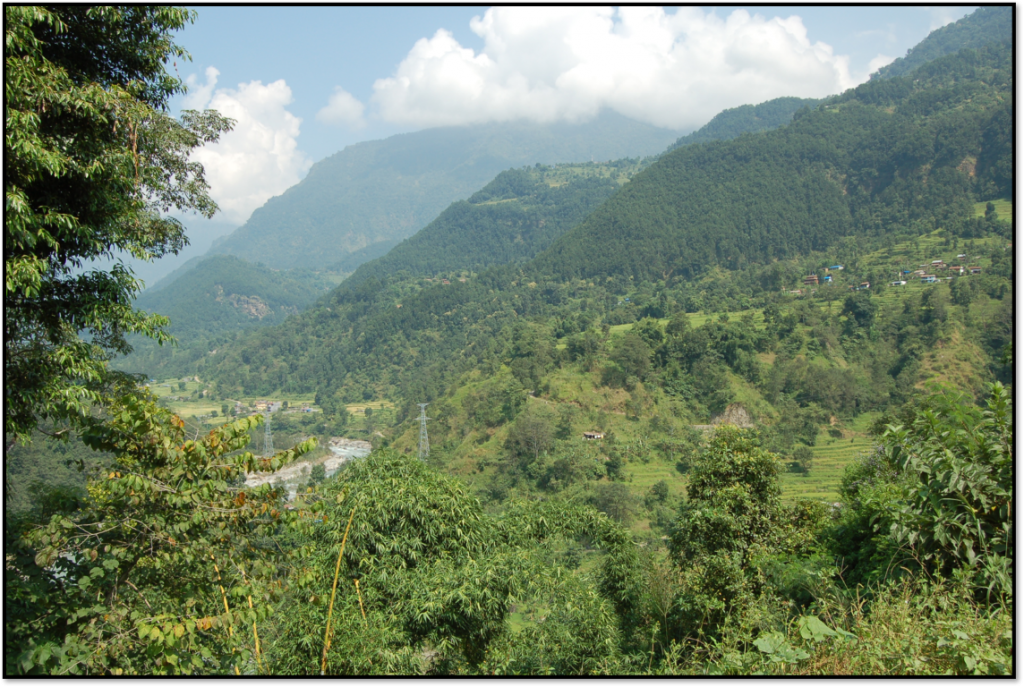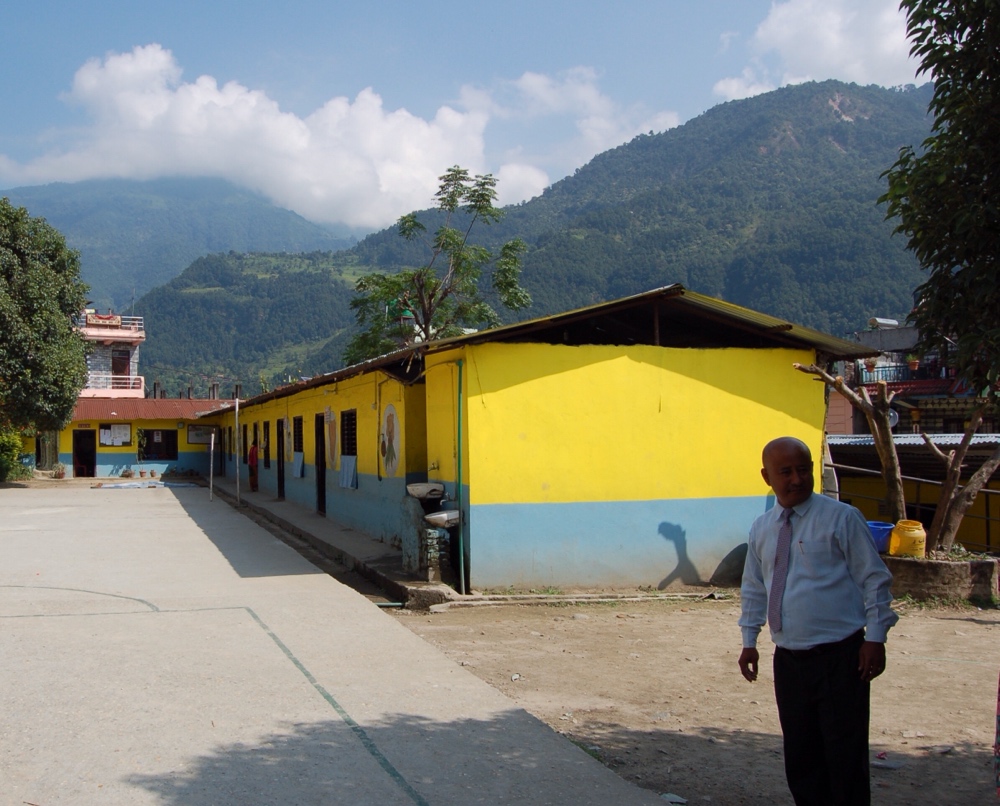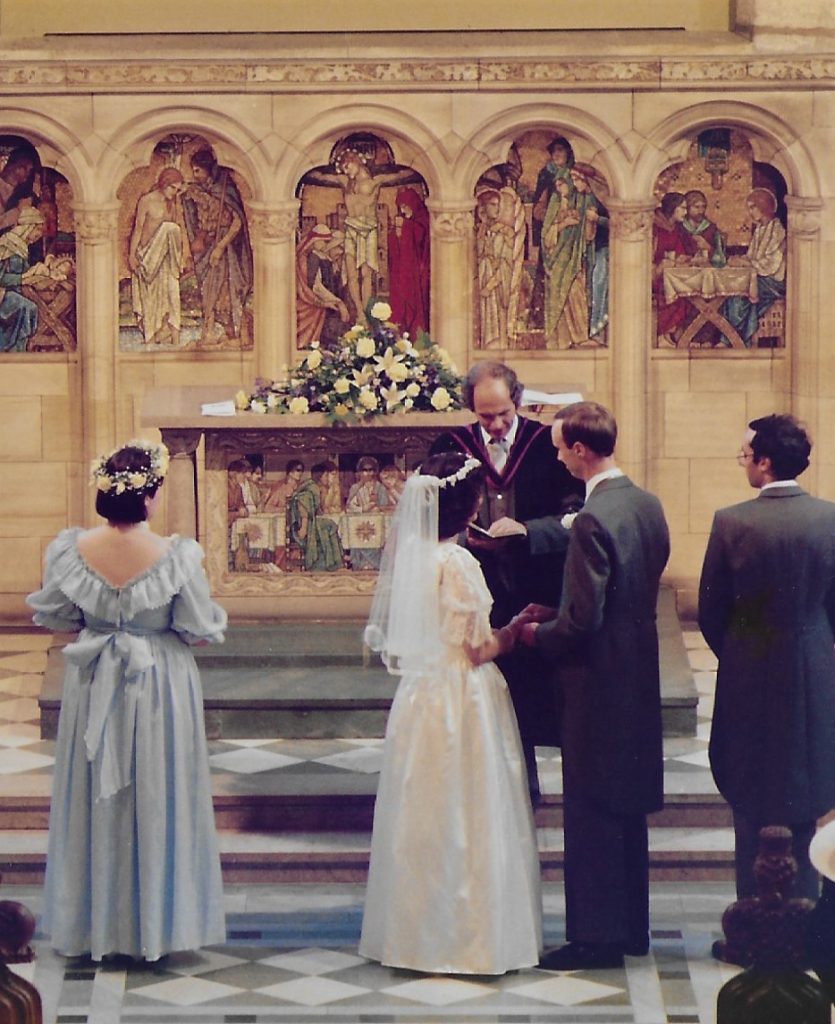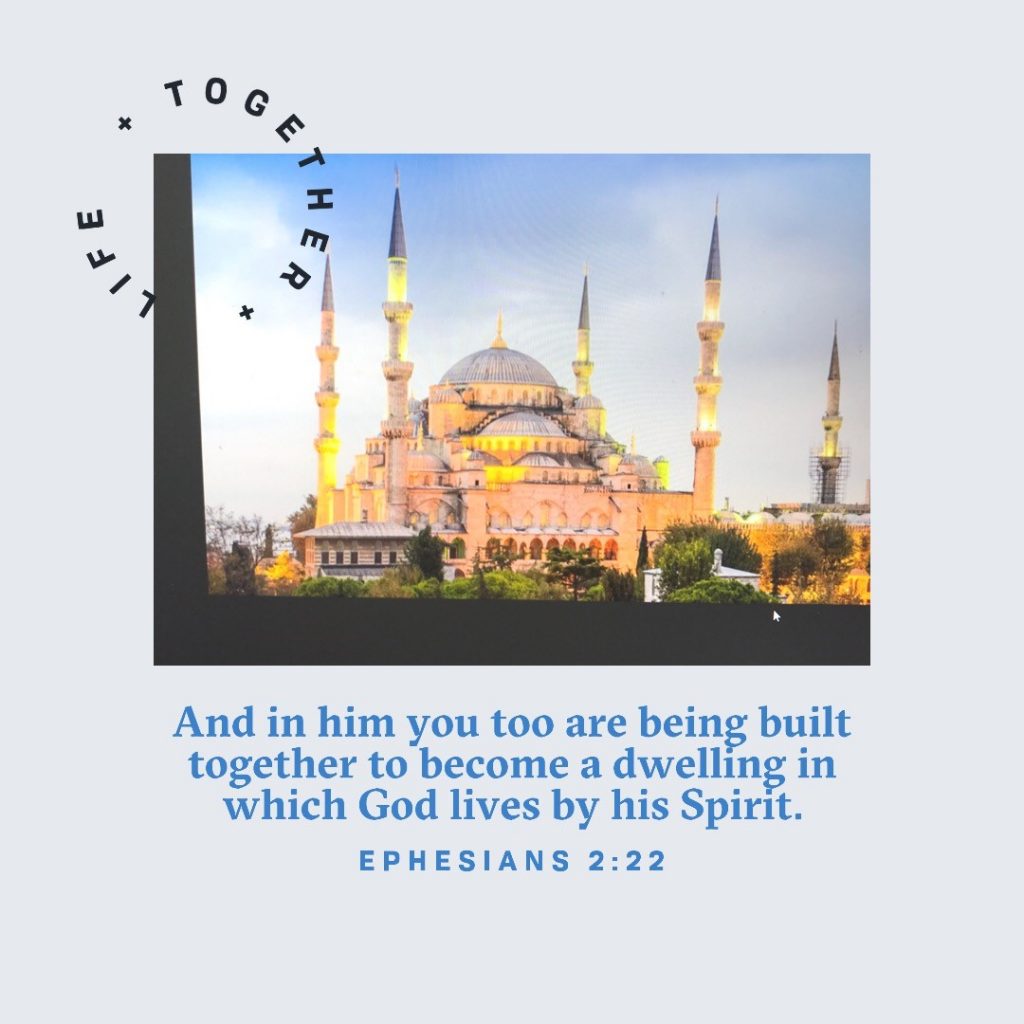On worshipping together
Churches often gather people from different ages under one roof, but the extent to which they are genuinely engaged in worship together is open to question. In 32 years of ministry I have lost count of the number of occasions on which I have failed to truly bring the ages together in worship. That being so, yesterday morning’s service, on the third Sunday of Advent, was particularly special.
The service began with a welcome. the lighting of the advent candles and a lively song. The very simple script which you can find here was then enacted by the children. At the close of the talk, people of all ages were invited to contribute by writing or drawing on a star, which they then added to a simple background of a night sky at the front of church. On the star, each person was to draw, or write what they might give to the baby Jesus. Since the innkeeper had given a bed, the wise men had given their gifts, and Mary and Joseph had given their love – what might they bring?
With some gentle Christmas music on in the background, I waited to see if people would join in. At first it was just a couple of children towing reluctant parents to the front. After that came a trickle, and then a flood as people kept leaving their seats and adding their stars to the night sky. The hardest part was reading them out afterwards – everything from ‘a kiss’ or ‘cake’ to ‘my today, tomorrow and every single day. You can see some further examples below.
Please enjoy them, and please feel free to steal the idea for yourselves!

